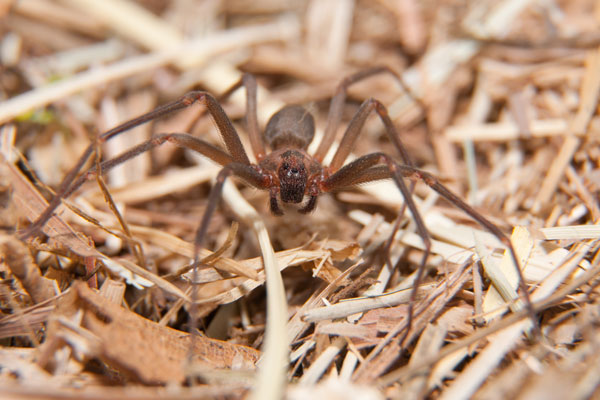Ouch! Is that a… spider bite? As the summer heats up, our eight legged friends can tend to appear more frequently. Although most spiders in the United States are not poisonous, their bites can leave red, itchy wounds with side effects that need medical attention. Learn about the most common spiders, the side effects of their bites, and what you should do to tend to them.

Common Symptoms
Many times, we don’t recognize that a spider has bitten us until hours after we have received the wound. However, regardless of what type of spider has bitten you, there are generic symptoms you can identify. They include:
- Pain around the bite area
- Itching or rash
- Fevers and chills
- Blistering that is red or purple in color
- Muscle pain or cramping
- Sweating and difficulty breathing
- Nausea and vomiting
- Headaches
Types of spider bites
Brown Recluse Bite
Brown recluse spiders are common in eastern Texas. They hide in dark secluded spaces and are usually not aggressive. The only reason they may bite you is if they are trapped against your skin.
When these spiders initially bite you it is painless. However, within eight hours your skin will begin to itch, hurt, and turn red. In addition, a red or purple ring may begin to form around the bite. Without treatment brown recluse bites will get progressively worse and begin to blister. The bite can kill surrounding tissue and lead to fevers, chills, and headaches. There is no antidote for brown recluse bite. To treat your bite simply keep the area clean. You can also visit the doctor, and they can prescribe you antibiotics. In extreme cases when tissue death occurs you will need to go to the hospital for potential surgery.
Black Widow Bite
Black widows can often be found in warm, southern states, like Texas. They are shiny, black, and hourglass shaped with a distinct red mark on their bodies. You can normally find them in spaces like the attic or basement, or among leaves or woodpiles. When black widow’s bite you may feel a slight prick of pain, or nothing at all. Your skin will react to the bite almost immediately and result in muscle cramping, pain and burning by the bite. You may also get a headache, begin sweating, or experience nausea and vomiting. You should be prompt when you see these bites, and visit your local Neighbors Emergency Center.
Hobo Spider Bite
Hobo Spiders are most common in the Pacific Northwest. They move very quickly on their long legs, and tend to attack people if they are provoked. They can commonly be found in window seals, the garbage, behind furniture, under baseboards, and in closets. When hobo spiders first bite, it tends to go unnoticed, but pain and numbness will occur in about 15 minutes or less. The bite site will then begin to turn red before eventually becoming hard and swollen after about 8 hours. After a day, or two, the bite may discharge fluids or even turn black. If you suspect you have been bitten by a hobo spider, seek medical treatment immediately, as antibiotics or even surgery may be needed.
If you have any unexpected spider bites this summer, remember we’re in your neighborhood! We are here for you 24 hours a day, 7 days a week, 365 days a year. Visit https://nec24.com/ to find the Neighbors Emergency Center nearest you!

